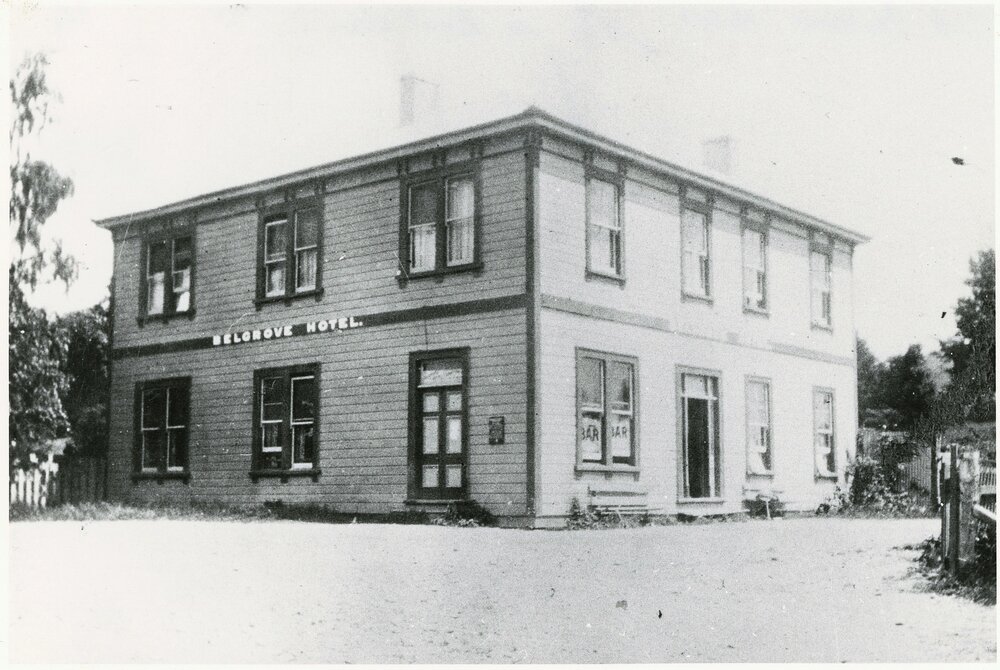History: A favoured rest stop for travellers – Belgrove Hotel Part 2

The third Belgrove Hotel 1900 – 1929. Photo: Waimea South Collection.
BY ROBYN PARKES
In the very early hours of 8 April 1930, the Belgrove Hotel, owned by J. Bowers with B. McDonald as landlord, was destroyed by fire. It spread so quickly that all the occupants had narrow escapes in leaving the building in their night clothes.
One boarder, John Galvin, was asleep and when he awoke found flames in his room. He was severely burnt and being unable to escape by the door, jumped to the ground from an upper storey window. He was taken to the Nelson Public Hospital but died the same day.
Nine others were in the hotel at the time. There were no firefighting appliances at Belgrove, and the building burnt furiously with the flames going so high into the air that the glare from the fire was said to be seen in Stoke. Lily McDonald, wife of the publican said she went to bed at about 8.20 p.m. and was awakened at an early hour the next morning by smelling a burnt rag somewhere. She at once ran out on to the landing and then called out. The fire seemed to be coming from the direction of bedroom No. 8, although some thought it had started in the kitchen.
Harry Fitzsimmons, police constable stationed at Wakefield, said that about twelve months previous he inspected the Belgrove Hotel in company with the health officer. After the fire, he examined the kitchen chimney and found it was cracked right through with burnt soot in the crevices. There was a crack wide enough that a piece of wire could go from the outside to the inside. Fitzsimmons took several bricks off the chimney by hand showing that the cement had either perished or had not been made strong enough.
Forward to October 1939 and Bert Winks advertised to inform the public that the new and up-to-date hotel was open with all modern conveniences, including electric lighting. The offical opening occurred with Winks entertaining about 30 guests at a dinner.
The new building was a twelve-roomed structure with a plaster exterior giving a bright, clean appearance to the building. Messrs Bogle and Brook of Richmond were the builders. Messrs H. J. Savage and Sons were responsible for the papering and painting, and Mr Brett for the plastering. The hotel was furnished throughout with new, and latest style furnishings made by Messrs Karsten and Hay.
A shocking case, for the times, occurred in 1937 when D. Mahar, the publican, had charges laid against him for selling alcohol after hours to girls aged 14 to 19. Liquor had been sold in the evening to patrons going to a dance, and after midnight there were at least 20 people at the hotel, including the young girls.
The sitting magistrate summed up, saying, “I regard this case as probably the worst I have had before me since I have been in Nelson, that is in the last 14 or 15 years. I cannot see one redeeming feature about it. It is a very serious state of affairs.”
Fines were imposed of £5 and 10s costs on each of the charges relating to supplying liquor to girls; £2 and 10s costs for exposing liquor; and £3 and 10s for selling liquor after hours. In 1970 the hotel was bought by a brewery who transferred its liquor licence to Rai Valley.
A compromise to be able to hold a licence was to apply as a country club, which was successful.
